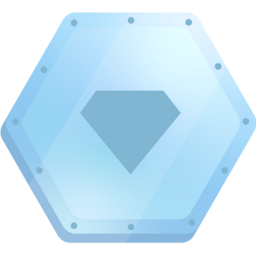Daniela Zamora
회원 가입일: 2024
다이아몬드 리그
22305포인트
회원 가입일: 2024

This course introduces the products and solutions to solve NLP problems on Google Cloud. Additionally, it explores the processes, techniques, and tools to develop an NLP project with neural networks by using Vertex AI and TensorFlow.
이 과정에서는 Google Cloud에서 프로덕션 ML 시스템을 배포, 평가, 모니터링, 운영하기 위한 MLOps 도구와 권장사항을 소개합니다. MLOps는 프로덕션에서 ML 시스템을 배포, 테스트, 모니터링, 자동화하는 방법론입니다. 학습자는 SDK 레이어에서 Vertex AI Feature Store의 스트리밍 수집을 사용하여 실습을 진행하게 됩니다.
이 과정에서는 Google Cloud에서 프로덕션 ML 시스템 배포, 평가, 모니터링, 운영을 위한 MLOps 도구와 권장사항을 소개합니다. MLOps는 프로덕션에서 ML 시스템을 배포, 테스트, 모니터링, 자동화하는 방법론입니다. 머신러닝 엔지니어링 전문가들은 배포된 모델의 지속적인 개선과 평가를 위해 도구를 사용합니다. 이들이 협력하거나 때론 그 역할을 하는 데이터 과학자는 고성능 모델을 빠르고 정밀하게 배포할 수 있도록 모델을 개발합니다.
This course describes different types of computer vision use cases and then highlights different machine learning strategies for solving these use cases. The strategies vary from experimenting with pre-built ML models through pre-built ML APIs and AutoML Vision to building custom image classifiers using linear models, deep neural network (DNN) models or convolutional neural network (CNN) models. The course shows how to improve a model's accuracy with augmentation, feature extraction, and fine-tuning hyperparameters while trying to avoid overfitting the data. The course also looks at practical issues that arise, for example, when one doesn't have enough data and how to incorporate the latest research findings into different models. Learners will get hands-on practice building and optimizing their own image classification models on a variety of public datasets in the labs they will work on.
This course covers how to implement the various flavors of production ML systems— static, dynamic, and continuous training; static and dynamic inference; and batch and online processing. You delve into TensorFlow abstraction levels, the various options for doing distributed training, and how to write distributed training models with custom estimators. This is the second course of the Advanced Machine Learning on Google Cloud series. After completing this course, enroll in the Image Understanding with TensorFlow on Google Cloud course.
Welcome to "CCAI Conversational Design Fundamentals", the first course in the "Customer Experiences with Contact Center AI" series. In this course, learn how to design customer conversational solutions using Contact Center Artificial Intelligence (CCAI). You will be introduced to CCAI and its three pillars (Dialogflow, Agent Assist, and Insights), and the concepts behind conversational experiences and how the study of them influences the design of your virtual agent. After taking this course you will be prepared to take your virtual agent design to the next level of intelligent conversation.
이 과정에서는 다양한 ML 비즈니스 요구사항과 사용 사례를 다루는 ML팀의 우수사례를 중심으로 ML 워크플로에 대한 실용적이고 현실적인 접근 방식을 포괄적으로 소개합니다. 이 팀은 데이터 관리 및 거버넌스에 필요한 도구를 이해하고, Dataflow 및 Dataprep에 대한 개괄적인 지식과 BigQuery를 사용한 사전 처리 작업 등을 바탕으로 데이터 사전 처리를 위한 가장 효과적인 접근 방식을 검토해야 합니다. 팀은 두 가지 구체적인 사용 사례에 맞는 머신러닝 모델을 빌드하는 세 가지 옵션을 제공합니다. 이 과정에서는 팀이 목표 달성을 위해 AutoML, BigQuery ML 또는 커스텀 학습을 사용해야 하는 이유를 설명합니다. 커스텀 학습에 대해서도 자세히 설명합니다. 학습 코드 구조, 스토리지, 대용량 데이터 세트 로드에서 학습된 모델 내보내기에 이르기까지 커스텀 학습 요구사항을 설명합니다. Docker에 대한 지식이 거의 없어도 컨테이너 이미지를 빌드할 수 있는 커스텀 학습 머신러닝 모델을 빌드합니다. 우수사례팀에서 Vertex Vizier를 사용한 초매개변수 조정과 모델 성능을 개선하는 데 이를 어떻게 활용할 수 있는지 연구합니다. 모델 개선에 대한 이해를 높이기 위해 정규화와 희소성 처리, 그 외 많은 중요한 개념과 원칙 등 이론적인 내용도 자세히 살펴봅니다. 마지막으로 예측 및 모델 모니터링을 개략적으로 설명하고 Vertex AI를 사용하여 ML 모델을 관리하는 방법을 알아봅니다.
Vertex AI Feature Store에 관해 알고 싶으신가요? ML 모델의 정확성을 개선할 방법을 알고 싶으신가요? 어떤 데이터 열에서 가장 유용한 특성이 나오는지 파악하려면 어떻게 해야 할까요? 특성 추출 과정에서는 좋은 특성과 나쁜 특성을 살펴보고 모델에서 이러한 특성을 적절하게 활용할 수 있도록 사전 처리하고 변환하는 방법을 알아봅니다. 이 과정은 BigQuery ML, Keras, TensorFlow를 사용한 특성 추출에 관한 콘텐츠와 실습이 포함되어 있습니다.
이 과정에서는 TensorFlow 2.x 입력 데이터 파이프라인 빌드, TensorFlow 2.x 및 Keras를 사용한 ML 모델 빌드, ML 모델의 정확성 개선, 사용 사례 확장을 위한 ML 모델 작성, 전문 ML 모델 작성에 대해 다룹니다.
이 과정에서는 먼저 데이터에 관해 논의하면서 데이터 품질을 개선하고 탐색적 데이터 분석을 수행하는 방법을 알아봅니다. Vertex AI AutoML과 코드를 한 줄도 작성하지 않고 ML 모델을 빌드하고, 학습시키고, 배포하는 방법을 설명합니다. 학습자는 Big Query ML의 이점을 이해할 수 있습니다. 그런 다음, 머신러닝(ML) 모델 최적화 방법과 일반화 및 샘플링으로 커스텀 학습용 ML 모델 품질을 평가하는 방법을 다룹니다.